

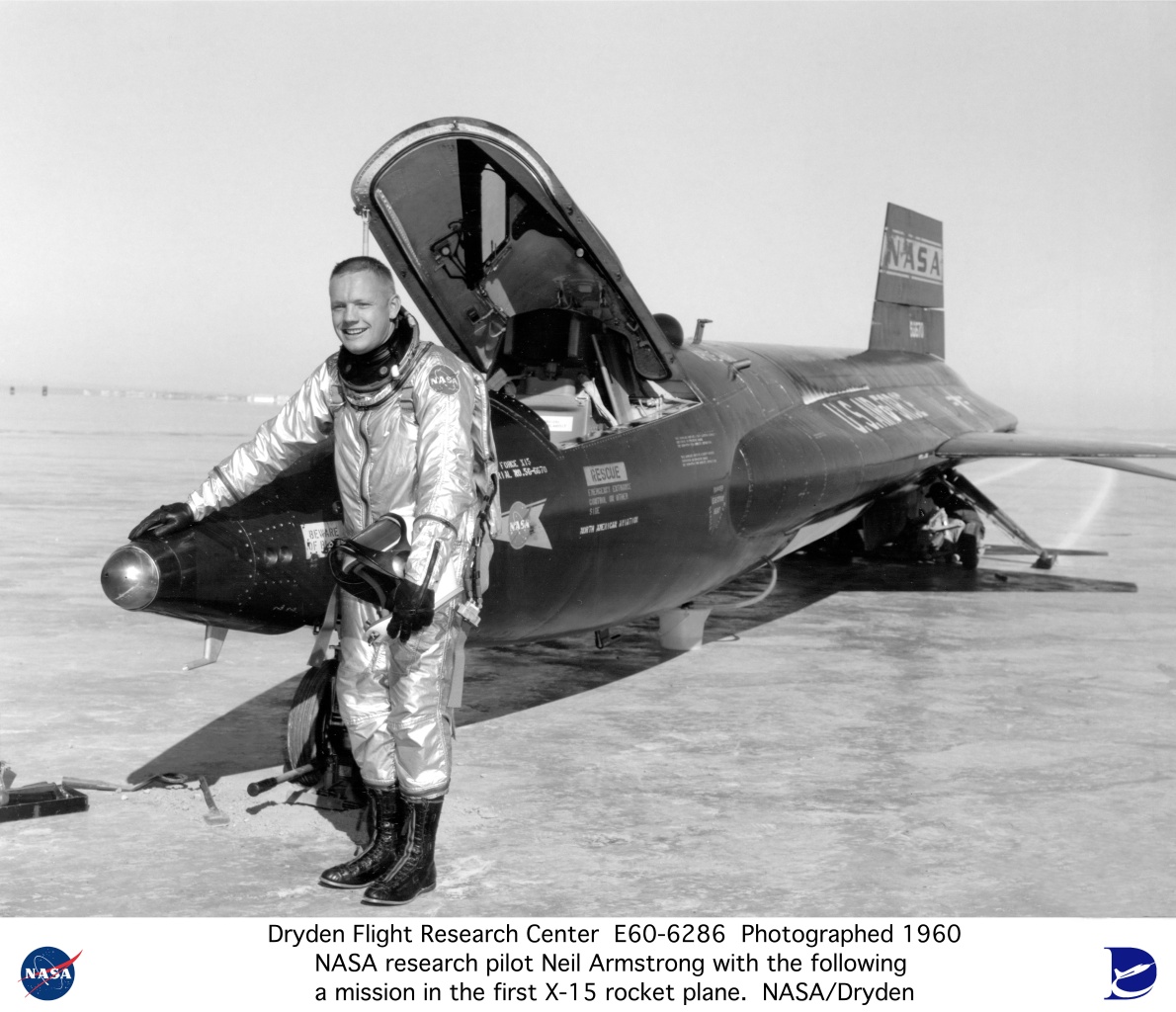
 |
 |
 |
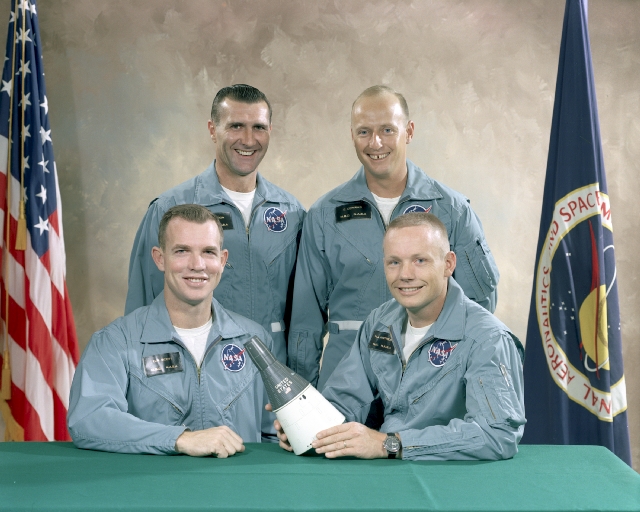 |
 |
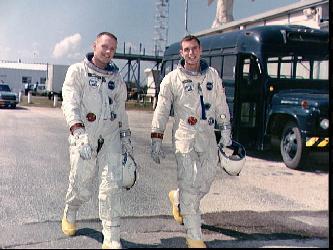
 |
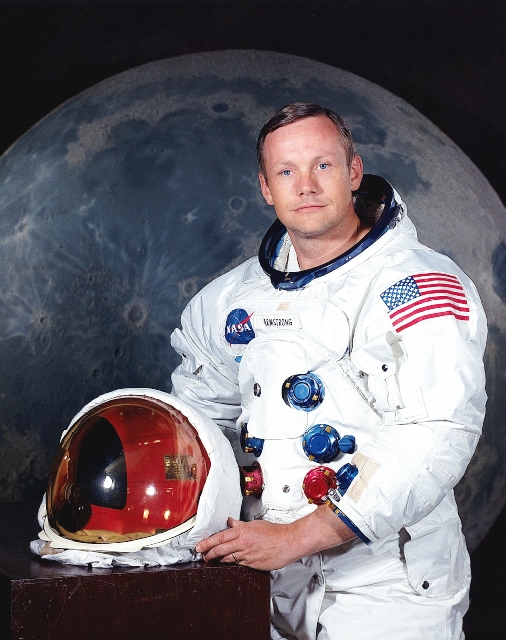 |
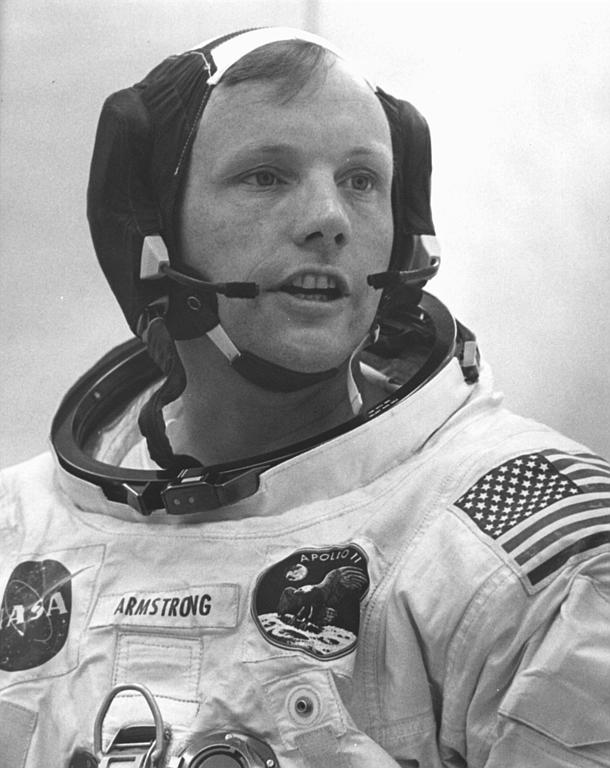 |
 |
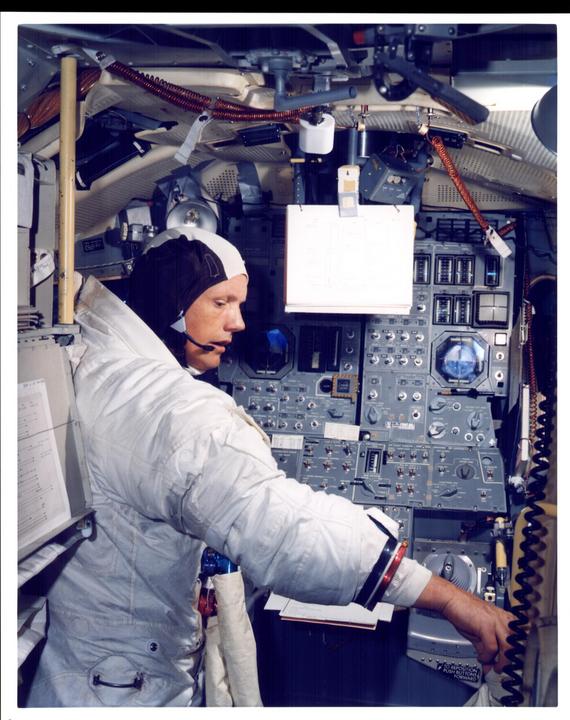 |
 |
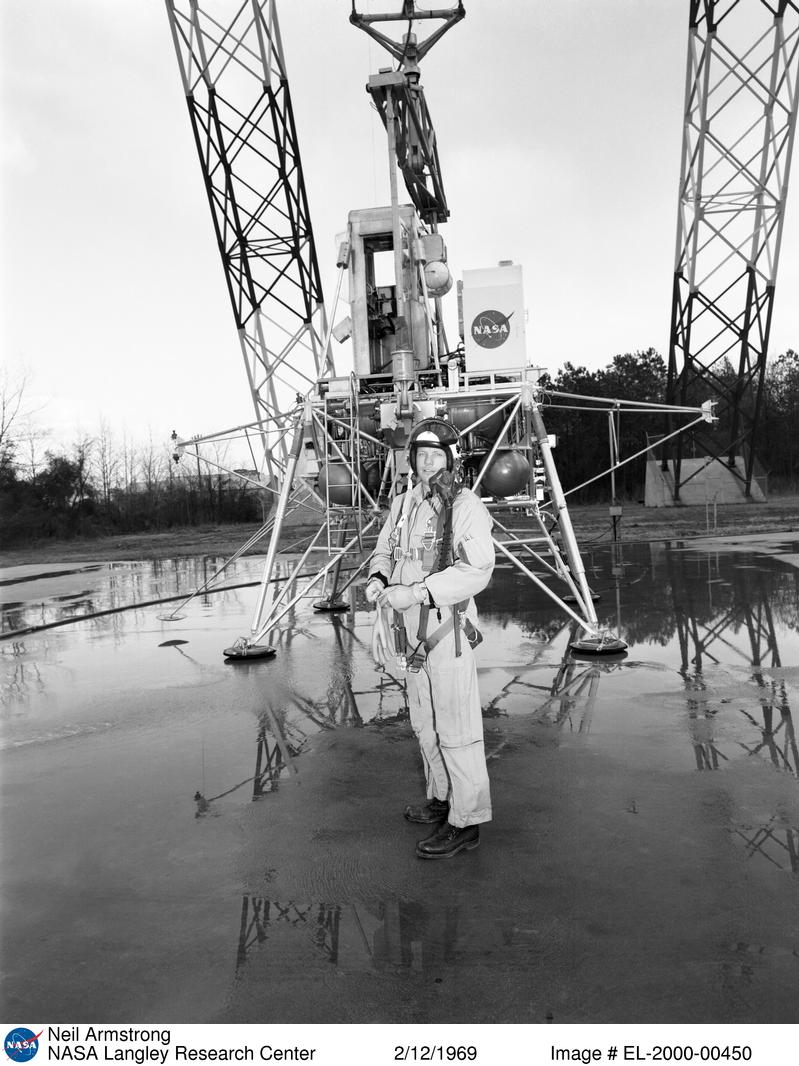
12 February 1969: Armstrong at Lunar Landing Research Facility (LLRF).
(EL-2000-00450)
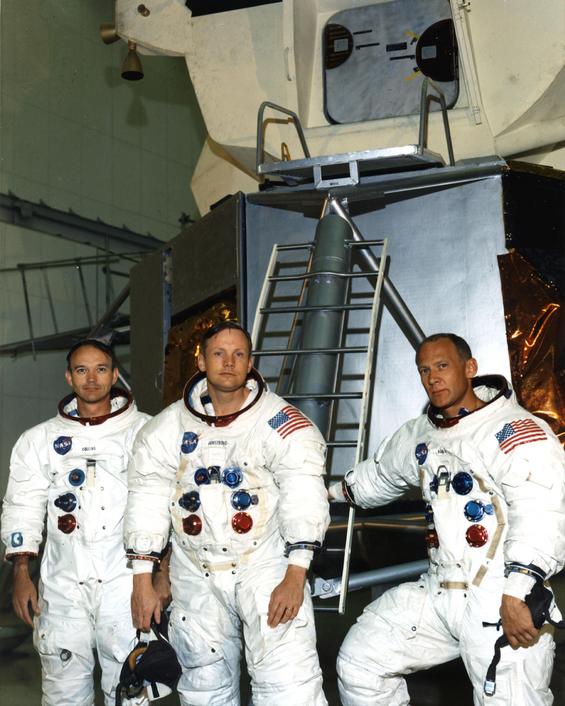
19 June 1969: The Apollo 11 astronauts rehearsed their lunar landing
mission in simulators here today. Pictured in front of a lunar module mockup
in the Flight Crew Training Building area, from left, are Michael Collins,
Command Module pilot; Neil A. Armstrong, commander; and Edwin E. Aldrin
Jr., Lunar Module pilot. (KSC-69PC-296)
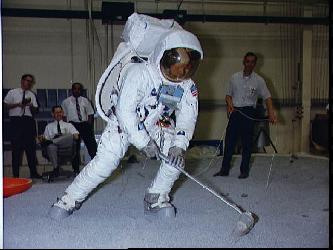

16 July 1969: Apollo 11 Commander Neil Armstrong prepares to put on
his helmet with the assistance of a spacesuit technician during suiting
operations in the Manned Spacecraft Operations Building (MSOB) prior to
the astronauts' departure to Launch Pad 39A. The three astronauts, Edwin
E. Aldrin Jr., Neil A Armstrong and Michael Collins, will then board the
Saturn V launch vehicle, scheduled for a 9:32 a.m. EDT liftoff, for the
first manned lunar landing mission (KSC-69PC-0377)
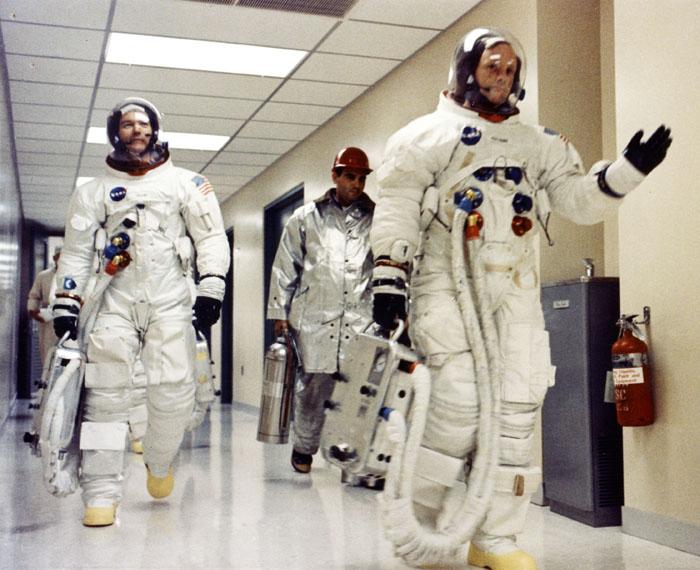
16 July 1969: Apollo 11 Commander Neil A. Armstrong waves to well-wishers
in the hallway of the Manned Spacecraft Operations Building as he and Michael
Collins and Edwin E. Aldrin Jr. prepare to be transported to Launch Complex
39A for the first manned lunar landing mission (KSC-69PC-342)
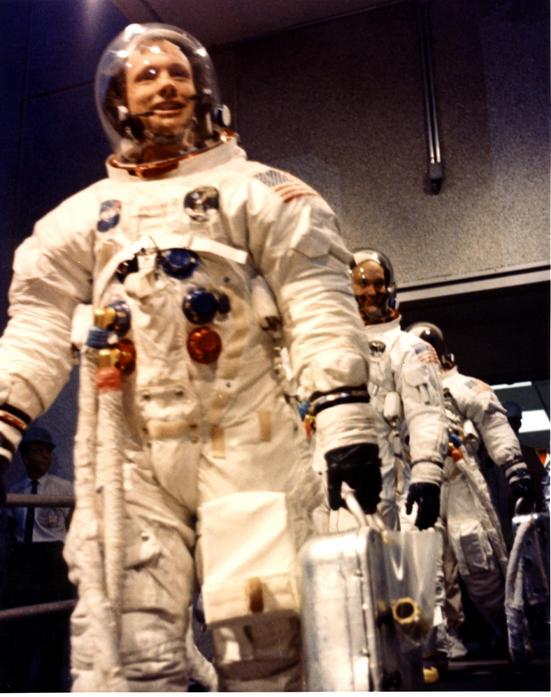
16 July 1969: Apollo 11 Commander Neil A. Armstrong leads astronauts
Michael Collins and Edwin E. Aldrin Jr. from the Manned Spacecraft Operations
Building to the transfer van for the eight-mile trip to Pad 39A. Liftoff
of Apollo 11 is scheduled at 9:32 a.m. EDT, which will begin man's first
lunar landing mission. (KSC-69PC-369)
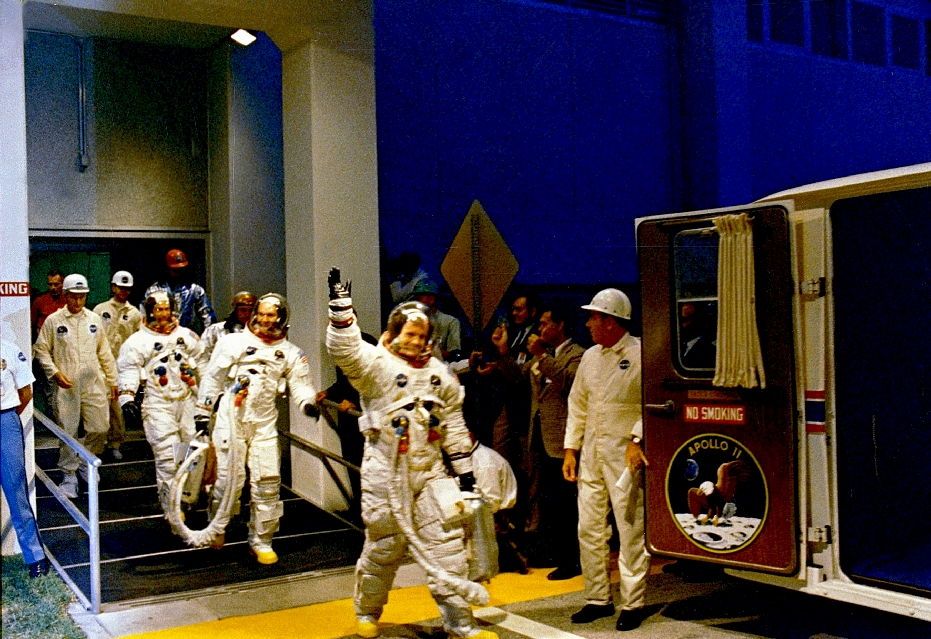

16 July 1969: The crew men of the Apollo 11 lunar landing mission leave
the Kennedy Space Center's (KSC) Manned Spacecraft Operations Building
(MSOB) during the pre-launch countdown. Astronauts Neil A. Armstrong, commander;
Michael Collins, command module pilot; and Edwin E. Aldrin, Jr., lunar
module pilot, ride the special transport van over to Launch Complex 39A
where their spacecraft awaited them. Liftoff was at 9:32 a.m. (EDT), July
16, 1969. (S69-39956
& KSC-69PC-0412)
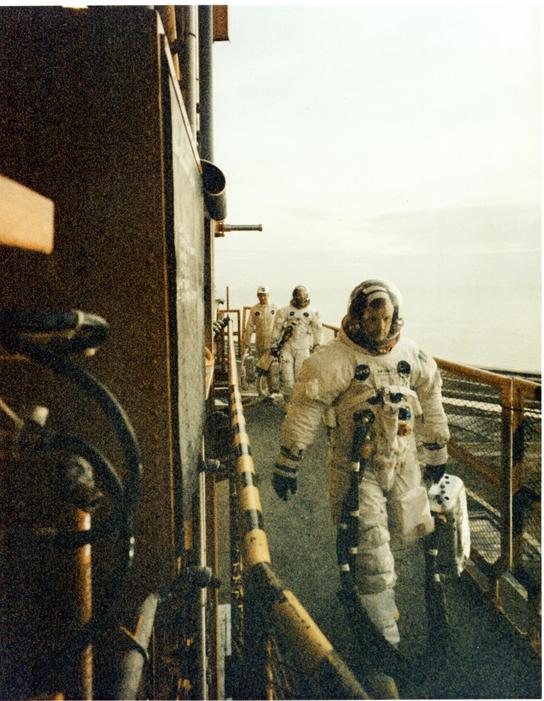
16 July 1969: Astronauts Neil A. Armstrong (front) and Edwin E. Aldrin
Jr. walk across the mobile launcher to enter their Apollo 11 spacecraft.
Along with them is Joe Schmidt, a suit technician from Johnson Space Center.
Not shown is the third member of the crew, astronaut Michael Collins. Liftoff
of Apollo 11 is scheduled at 9:32 a.m. EDT from Pad 39A, which will begin
man's first lunar landing mission. (KSC-69PC-399)
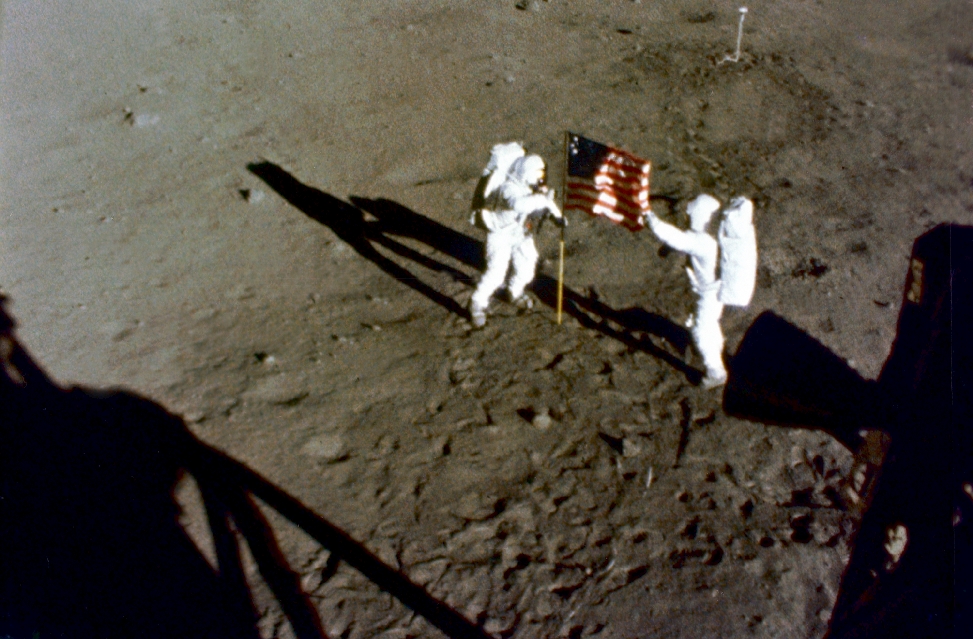
20 Julu 1969: The deployment of the flag of the United States on the
surface of the Moon is captured on film during the first Apollo 11 lunar
landing mission. Here, astronaut Neil A. Armstrong, commander, stands on
the left at the flag's staff. Astronaut Edwin E. Aldrin, Jr., lunar module
pilot, is also pictured. The picture was taken from film exposed by the
16mm Data Acquisition Camera (DAC) which was mounted in the Lunar Module
(LM). While astronauts Armstrong and Aldrin descended in the Lunar Module
(LM) "Eagle" to explore the Sea of Tranquility region of the Moon, astronaut
Michael Collins, command module pilot, remained with the Command and Service
Modules (CSM) "Columbia" in lunar-orbit. (S69-40308)

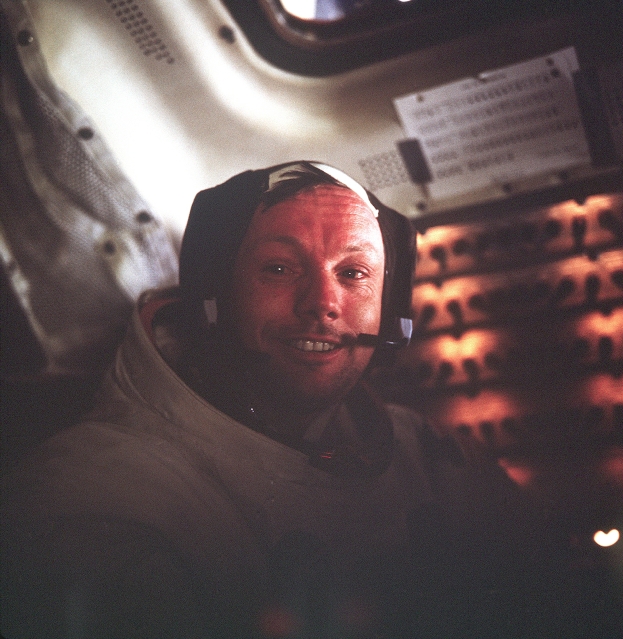
20 July 1969: This photograph of astronaut Neil A. Armstrong, Apollo
11 commander, was taken inside the Lunar Module (LM) while the LM rested
on the lunar surface. Astronauts Armstrong and Edwin E. Aldrin, Jr., lunar
module pilot, had already completed their historic extravehicular activity
(EVA) when this picture was made. Astronaut Michael Collins, command module
pilot, remained with the Command and Service Modules (CSM) in lunar orbit
while Armstrong and Aldrin explored the Moon's surface. (C-1995-03440
& AS11-37-5528)
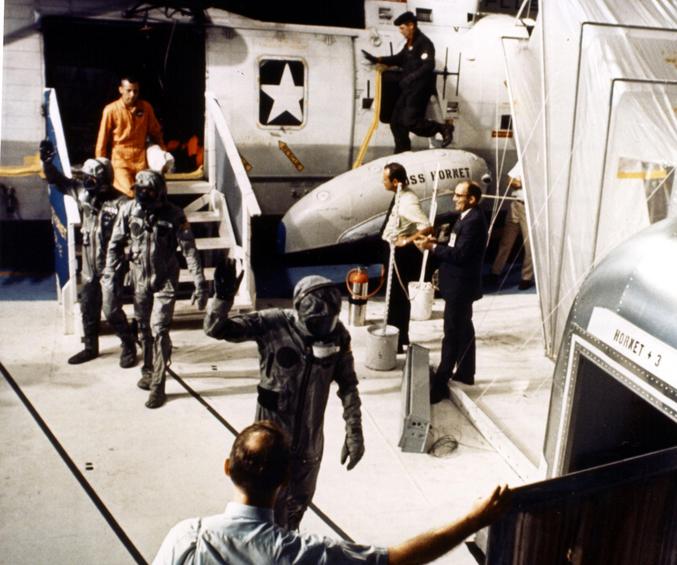
24 July 1969: A technician aboard the USS Hornet holds the Mobile Quarantine
Facility door open for the Apollo 11 astronauts as they leave the recovery
helicopter. Astronauts, left to right, Edwin E. Aldrin Jr., Neil A. Armstrong
and Michael Collins were taken to the USS Hornet after their Lunar Landing
mission came to a successful completion at 12:50 p.m. EDT. (KSC-69PC-453)
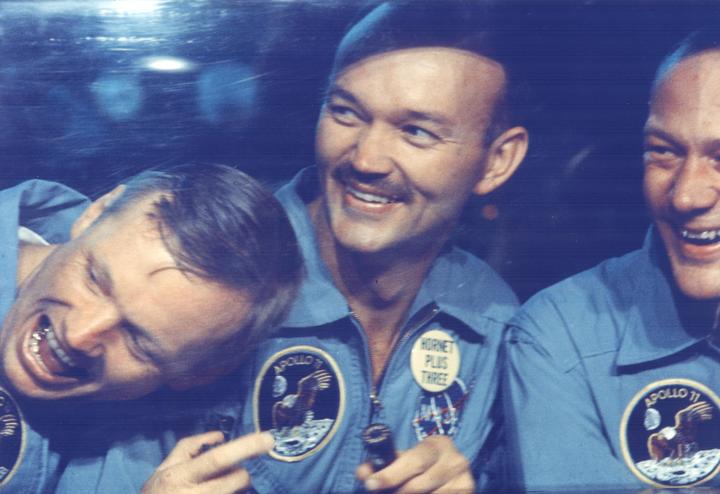
24 July 1969: The Apollo 11 astronauts, left to right, Neil A. Armstrong,
Michael Collins and Edwin E. Aldrin Jr. share jokes with well-wishers on
the other side of the window of their Mobile Quarantine Facility aboard
the USS Hornet. The astronauts splashed down at 12:50 p.m. EDT at the completion
of their historical eight-day first manned lunar landing. (KSC-69PC-429)

26 July 1969: Within the Mobile Quarantine Facility, Apollo 11 astronauts
(left to right) Michael Collins, Edwin E. Aldrin Jr. and Neil A. Armstrong
relax following their successful lunar landing mission. They spent two-and-one-half
days in the quarantine trailer enroute from the USS Hornet, prime recovery
ship, to the Lunar Receiving Laboratory at the Manned Spacecraft Center
in Houston. The Hornet docked at Pearl Harbor where the trailer was transferred
to a jet aircraft for the flight to Houston. (KSC-69PC-484)

Neil Armstrong in 1981 (NASA
GRC 1981-05581)
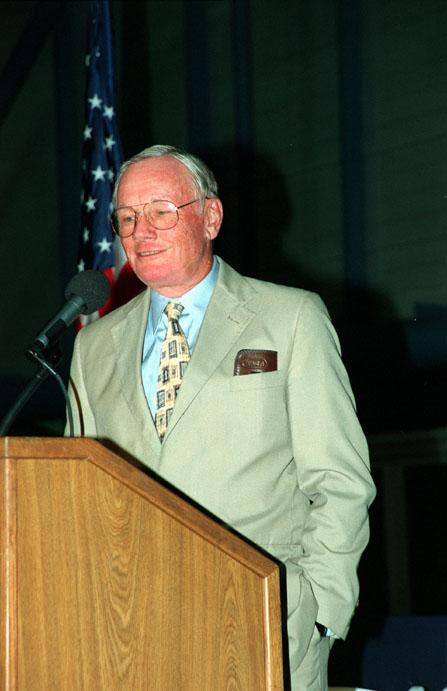 |
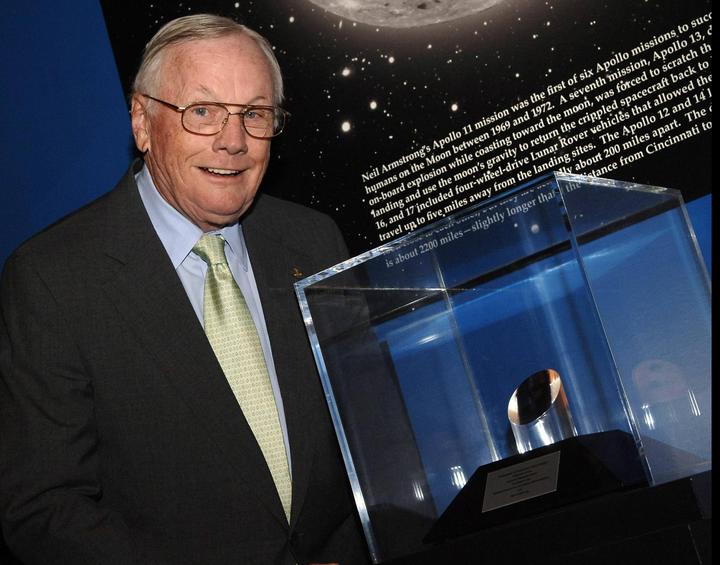 |
.
|